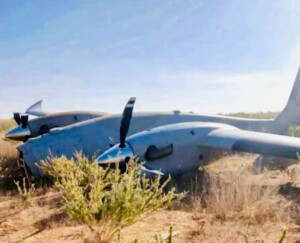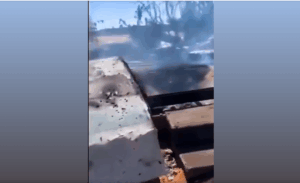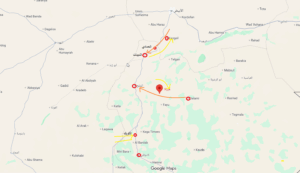Sudan OCHA Bulletin 3: 200,000 South Sudanese refugees expected in Sudan in 2018
The UN Office for the Coordination of Humanitarian Affairs (OCHA) reports in its third biweekly bulletin of this year that 200,000 South Sudanese refugees are expected in Sudan in 2018.

The UN Office for the Coordination of Humanitarian Affairs (OCHA) reports in its third biweekly bulletin of this year that 200,000 South Sudanese refugees are expected in Sudan in 2018.
The 2018 South Sudanese Regional Refugee Response Plan (RRRP) was launched in early February, targeting an estimated 200,000 refugee arrivals in Sudan in 2018. Continued fighting, limited humanitarian assistance and extreme levels of food insecurity are forcing citizens of South Sudan to seek refuge, safety and access to food and basic services in neighbouring countries. The Government of Sudan maintains an open border policy for the refugees, ensuring unfettered access, immediate protection and safety within Sudan’s borders. The response strategy for 2018 focuses on assistance for new arrivals, while at the same time addressing ongoing needs of the existing refugee caseload, including those in out-of-camp locations.
The Response’s three main objectives for 2018 are:
- maintaining an emergency response capacity to ensure immediate protection responses and address the urgent needs of new arrivals in 2018;
- stabilizing the existing programs to achieve at least minimum emergency standards across sectors, particularly by enhancing further integration with national response mechanisms;
- and promoting sustainable solutions for refugees through self-reliance and host community support, and create linkages to national development plans.
OCHA reports that as the South Sudanese refugee response enters its fifth year, there is a need to move beyond just emergency response, and focus on longer-term solutions that will strengthen resilience and allow the refugees to become more self-reliant. Camp-based assistance will continue to be provided in established camps, with a move towards more durable infrastructure. At the same time, greater emphasis will be placed on addressing refugee needs in out-of-camp locations, with a view to expand community-based assistance to support host communities and ensure refugees are able to continue living outside of camps if they choose.
OCHA: Food gaps may occur in parts of North Darfur and Kassala
Families in parts of North Darfur and Kassala states may face difficulties meeting food needs, between now and May 2018, the UN Office for the Coordination of Humanitarian Affairs (OCHA) reports in its third biweekly bulletin of this year.
According to the January 2018 FEWS NET Key Message Update, North Darfur and Kassala states may begin to face Crisis (IPC Phase 3) levels of food security, OCHA reports.
The food gap is attributed to the poor rains, which have led to substantial crop losses in agro-pastoral areas, and poor regeneration of pasture lands, resulting in poor grazing for livestock and reducing household milk availability.
In other parts of the country, ongoing harvests of the 2017/18 main agricultural season are improving household’s access to food, leading to Minimal (IPC Phase 1) or Stressed (IPC Phase 2) levels of food security through May 2018. However, internally displaced persons (IDPs) in areas controlled by the Sudan People’s Liberation Movement – North (SPLM-N) in South Kordofan, and in inaccessible areas of Jebel Marra, will continue to face Crisis (IPC Phase 3) levels of food security during the harvest period, from October to December 2018, said FEWS NET, OCHA says.
WFP to start SCOPE registration of protracted IDPs in Tawila, North Darfur
The World Food Programme (WFP) is continuously improving its humanitarian response in Tawila locality, North Darfur and in April will be registering protracted IDPs in the area using SCOPE system to allocate assistance through its Food for Assets activities. SCOPE is WFP’s beneficiary identity and benefit management system, which helps the organization acquire better information on the people it serves to ensure proper/required assistance is provided. SCOPE is used to register people, determine type of assistance needed, deliver assistance, and subsequently manage operational data, creating a responsive information system which can be used to guide effective programming across all distribution modalities, whether food or cash.
The IDPs in Tawila had refused in December 2017 to participate in SCOPE registration given than many people would have travelled back to farms in their areas of origin to work during the harvest period. This decrease in number of IDPs would decrease the amount of food distributed and therefore, people refrained from registering in the hope of maintaining the same level of assistance serving fewer people.
WFP is raising awareness amongst beneficiaries to make clear that the registration process does not automatically decrease the amount of food they receive. Many were also said to possess no national identity documents with which to confirm identity.
Distribution of shelter and household supplies in Golo and Nierteti, Jebel Marra
The International NGO Norwegian Church Aid (NCA), distributed winter emergency shelter and non-food items (ES/NFIs) to 1,500 vulnerable families (about 7,500 people, including 4,500 women and girls) in the Golo and Nierteti areas of Jebel Marra.
ES/NFIs remain among the most critical requirements for protection of newly displaced populations, new returnees and vulnerable IDPs living in protracted displacement. During the winter period—usually between December and February—temperatures at night can drop to 7-8 degrees Celsius or lower in many parts of Darfur. Without this assistance, vulnerable people, especially young children and the elderly face increased risk of illnesses such as chest and Acute Respiratory Tract Infections.
To prepare for the winter ES/NFI distributions, NCA carried out assessments in Golo and Nertiti in November and December 2017. During these missions, the NCA Emergency Preparedness and Response Unit (EPRU) met with community leaders and other stakeholders to explain the methodology, selection of recipients, as well as the verification and distribution processes. The teams then visited all households on a list provided by the community leaders to verify vulnerable households with orphans, widows, the mentally ill, the physically disabled, the chronically ill, or elders.
The UN Refugee Agency (UNHCR) provided and transported the winter supplies from the NFI common pipeline warehouse in El Geneina town (West Darfur), to the distribution sites in Nertiti and Golo where they were distributed by NCA volunteers. On-site monitoring was conducted by UNHCR, HAC and community representatives. The beneficiaries acknowledged receipt of the items by the head of household signing /finger stamping against their name on the list.
UNHCR manages the NFI common pipeline, which is the main provider of relief items to partners, especially national NGOs, for distribution to affected people. In 2017, over 21,000 vulnerable IDP families (over 100,000 people) in Darfur benefitted from ES/NFIs through the NFI common pipeline.











 and then
and then